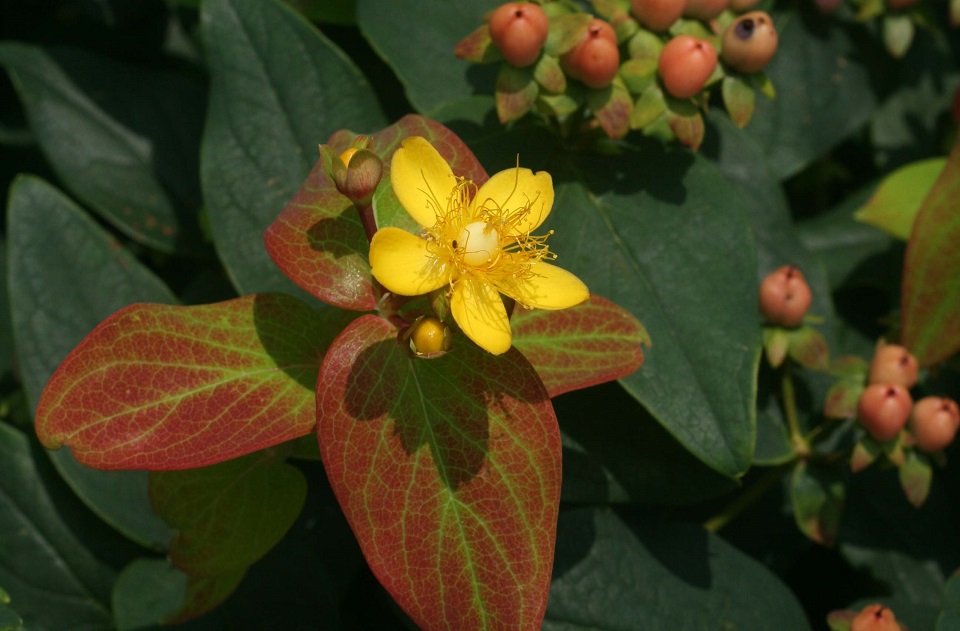
Submitted by Beth Willis, trials coordinator for the UT Gardens, Knoxville
Most people associate St. John’s Wort with the herbal remedy for depression, but gardeners should be aware that the ornamental varieties of St. John’s Wort will certainly chase away the blues when planted in the garden. These shrubs provide a long season of interest thanks to cheery blooms of bright yellow with distinctive numerous stamens that appear in midsummer and last into fall. The blooms are followed by attractive berries, in colors from cream to red, depending on the cultivar.
St. John’s Wort (Hypericum sp.)can be planted in full sun or part shade. Best growth occurs in full sun, but afternoon or dappled shade can help to prevent leaf burn and wilt in hot, humid climates. Well-drained soil is best as hypericums can be susceptible to root rot. Although the species will self-seed, most of the ornamental cultivars do not come true to type from seed and so are best propagated through cuttings.
St. John’s Wort makes a great backdrop for smaller plants when placed in the rear of landscape beds, or it can be integrated into a rock or woody garden. It also performs well in containers. Blooms are very attractive to bees. Once planted and established, it requires no major care. Blooms are produced on new wood, so prune in early spring if you wish to control size or shape.
Although common St. John’s Wort (H. perforatum) is considered a noxious weed in many parts of the world, numerous ornamental cultivars are available that are smaller and better-behaved. Some of the varieties available on the market include:
– H. Hypearls series (‘Olivia’, ‘Renu’, ‘Jacqueline’ or ‘Jessica’) – the individual cultivars in this series vary in height (from 25 inches to 36 inches) and in berry color, but all perform well in our heat. Hardy to Zone 6.
– H. x moserianum ‘Tricolor’ – this low-growing sub-shrub has exciting variegated foliage of pink, red, cream and green. Grows between 1- to 2-feet tall by 1.5- to 3-feet wide. Hardy to Zone 6.
– H.frondosum ‘Sunburst’ – the blooms on this variety can measure up to 2 inches in diameter. Hardy to Zone 5.
– H. ‘Hidcote’ – a popular cultivar that has received the Award of Garden Merit from the Royal Horticultural Society of Great Britain. Hardy to Zone 5.
Contacts:
Beth Willis, trials coordinator, UT Gardens, Knoxville
Patricia McDaniels, UTIA Marketing and Communications Services, 615-835-4570